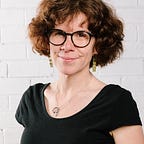Experimenting with social imagination in Melbourne
A year ago, we at the Centre for Public Impact Australia and New Zealand (CPI ANZ) started noticing discussions about social imagination in our networks and became intrigued. A little exploration revealed groups engaging in ideas around collective imagination and a growing body of thought and theory around why we need social imagination in our times.
The challenges we face as a society are more complex than ever, and as a result our responses are often stunted by our fears and sense of powerlessness. We see this clearly with how we as individuals and communities respond to the enormity of the climate crisis. So, we need both individual and social imagination to lend us the sense of possibility and expansiveness we require in order to act. And we must act. We wanted to explore the possibilities of social imagination in the context of the climate crisis in Australia.
But where?
Where might this exploration and experimentation be possible? Enter our colleagues at the City of Melbourne, who are always interested in courageous innovations to tackle the challenges cities face. We began working with those within the City of Melbourne and their community partners who understood the problems locals face. They pointed us towards the Southbank, an interesting place to test whether a social imagination initiative could contribute to better engagement in the climate crisis.
We understand from extensive community engagement that a big priority for those living in the Southbank is a sense of connectedness and belonging — to each other and the place they live. This sounds ripe for a social imagination experiment, imagining how we might belong to each other and the natural world in the face of the climate crisis.
“We need stories of belonging that move us towards each other, not from each other; ways of being human that open up the possibilities of being alive together; ways of navigating our differences that deepen our curiosity, that deepen our friendship, that deepen our capacity to disagree, that deepen the argument of being alive. This is what we need. This is what will save us. This is the work of peace. This is the work of imagination.” Padraig O’Tuma
High-density housing, which is the dominant model within the Southbank, creates disconnection, which exacerbates the isolation, constraint, and powerlessness we often feel in the face of climate change. If we are to act, we need to act together. And to act together, we need to know each other. The COVID-19 pandemic made this truth abundantly clear: we need each other for our mental wellbeing and collective thriving, and this will only become more pressing as the climate crisis evolves.
This presents an exciting opportunity to use the practice of social imagination to explore:
- How might we feel connected to each other in the context of high-density housing and a lack of natural opportunity to connect?
- What blend of connection and imagination will lead to action that creates futures that the generations to come will thank us for?
How will we explore these questions?
We plan to invite residents and people working in Southbank to engage their imagination individually and collectively. We will create conditions where people feel safe to explore, in the wildness of their imaginations, what might be possible.
Using art and experiences, we will explore the values and emotions we hold around the idea of belonging, both now and in the future. By imagining what is possible and carefully exploring the feelings this generates, we will support people to individually and collectively imagine futures that are not constrained by our analytical and rational minds.
“There are limitations to only engaging people to think about the future in an analytical and rational way. We need something to pull us away from the status quo — this comes from feeling and experiencing what else is possible.” Cassie Robinson
And then…?
Once we have imagined the future we want to build, we will imagine how we might create these futures, both individually and collectively. Drawing on design expertise from Master’s students at Royal Melbourne Institute of Technology (RMIT) and the expertise held within the City of Melbourne team, we will consider prototyping and what is needed to realise these dreams practically. We are also exploring potential funding opportunities to ensure that those engaged have the resources and support they need to put these ideas to the test in the real world.
Who else is doing this?
As mentioned, we are inspired by people doing similar work, building a more expansive imagination practice for our current context.
We advocate exploring the work of the Superflux cascade enquiry, the Joseph Rowntree Foundation, the New Constellations group and Canopy in the UK, in addition to the ideas of Hilary Cottam and the adventures of Civic Square. These groups (and more) essentially say: it doesn’t have to be this way.
In the words of David Graeber, “The ultimate, hidden truth of the world is that it is something that we make, and could just as easily make differently.”
What now?
We will share lessons from this project regularly, hoping to inspire others and contribute to developing these ideas in the emerging sector.
Stay tuned to hear what we learn about belonging and connection in the urban environment, and the power of this collective to imagine and build regenerative futures that the generations to come will thank us for.
